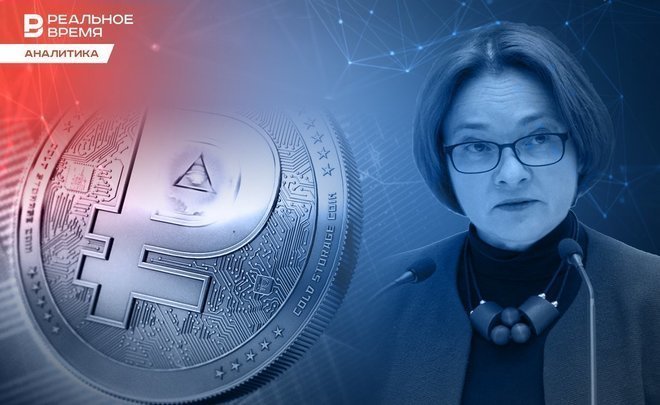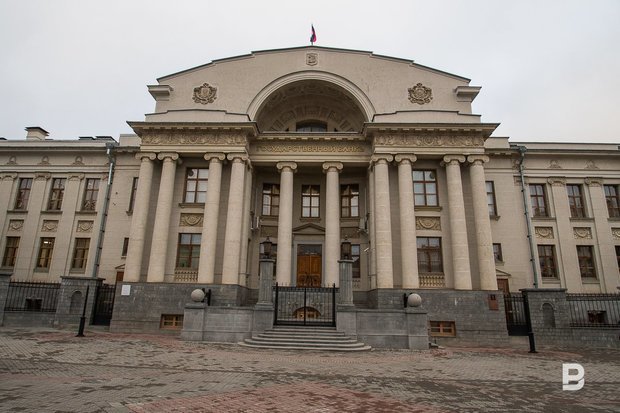Digital ruble not become popular
Elvira Nabiullina has shifted the timing of testing the digital ruble — the regulator is waiting for a regulatory framework

Payments in digital rubles were to start in 13 Russian banks from April. It was expected that at the first stage Russians would have the opportunity to open and close digital wallets, pay for purchases, transfers and refunds. However, the pilot did not launch within the stated time frame. What “slows down” the introduction of digital ruble, whether it is beneficial to banks, and whether it will help in the fight against corruption — in the review of the analytical service of Realnoe Vremya.
From April 1, testing of payments by individuals in digital rubles was supposed to start in Russia. It was expected that 13 banks would take part in it, which technically confirmed their readiness. Their list is not disclosed, but earlier the first pilot group for testing the digital ruble included: Alfa-Bank, Dom.rf Bank, VTB, Gazprombank, Tinkoff, Promsvyazbank, Rosbank, Sberbank, SKB-Bank, Soyuz Bank, MTS Bank, Sovcombank, and Kiwi Bank.
The digital ruble platform began testing in February 2022. In September, the chairman of the Central Bank of the Russian Federation, Elvira Nabiullina, reported that the regulator planned to start testing the digital ruble in real conditions in the spring of 2023.
Testing of the digital ruble will begin as soon as the legislative and regulatory framework is adopted, the department of the Central Bank of Tatarstan clarified.
The Bank of Russia is ready to conduct pilot testing on the previously announced dates — in April. But since real people will participate in it and operations will be carried out with real money, it is necessary to have a legal basis. Currently, the package of bills on the digital ruble has already passed the first reading in the State Duma. “We hope for its further adoption as soon as possible," the Central Bank's Tatarstan branch reported.

It is assumed that digital rubles will be stored in digital wallets of citizens and companies, which, in turn, will be opened on the platform of the Bank of Russia. Transactions with digital rubles will also take place on this platform. At the same time, access to digital wallets will be through the usual remote channels — mobile applications of banks and Internet banks.
The digital ruble is being created as a new means of payment, and not as a means of saving or lending, so interest will not be accrued. And the loan will still be available at banks in cash or cashless. Cashback will also not be credited for operations with digital rubles.
The introduction of the digital ruble has a number of advantages, the Bank of Russia stressed. First, it is planned that transfers of digital rubles for citizens will be free. The second is independence from bank tariffs and bank restrictions on transfers. The third is access to money on a digital wallet through the mobile application of any bank where a person is served.
Each person will have the opportunity to open one digital wallet on the platform of the Bank of Russia. This can be done through the bank's usual mobile application. It will also be possible to replenish the wallet or transfer money from it through the mobile application of any bank whose client is a person. Currently, a technology is under development that will allow you to pay with digital rubles even where there is no Internet.
At the same time, the level of protection of the digital ruble platform, on which digital wallets will be stored and operations will take place, is unprecedentedly high, the department of the Central Bank of the Russian Federation for Tatarstan noted. The platform was created taking into account all the necessary levels of information security, operational reliability, and cyber stability.
The introduction of digital ruble is a large-scale project. First it is necessary to conduct a pilot on real digital rubles with real customers. The decision on scaling the digital ruble will be made based on the results of passing all stages of the pilot and taking into account the feedback of its participants, the regulator stressed.
The pilot will test basic operations: opening and closing digital wallets, transferring digital rubles between citizens, paying for purchases and services using a QR code, self-executing transactions (so-called smart contracts). It is supposed to automate standard payments, for example, payment for housing and communal services. In the future, the list of options with a digital ruble will expand.
The pilot will take place in stages and will last as long as it takes to work out all the necessary operations and make the digital ruble a convenient means of payment and transfer.
The inevitable future
VTB is moving ahead of the initial deadlines to launch the digital ruble, the bank's press service told Realnoe Vremya. Last year, VTB tested operations with digital rubles issued on the test version of the digital ruble platform of the Bank of Russia, and already in the autumn, they began testing the purchase of digital financial assets for digital rubles. The bank has already tested the transactions of individuals for the purchase and sale of digital rubles from a non-cash account, transfers to digital wallets between individuals, as well as payments in favour of legal entities. Transaction amounts vary depending on the test scenarios.
“It is expected that in April the Bank of Russia begins testing on real digital money: participating banks will form focus groups from among their employees-customers of the bank. It is planned that this testing will last until the end of 2023. Based on the results of the focus group, it will be possible to assess the readiness to launch digital ruble payments in general. The results of testing will show how much the digital ruble service will be in demand," the VTB press service noted.
Rosbank considers the digital ruble project promising. “It will be possible to use digital rubles using the bank's mobile application," the Rosbank press service told Realnoe Vremya. “Customers will have the opportunity to view their availability as a separate product in the Digital Currencies section, which will be located in the My Products section. This tab will contain the Digital Wallet with a unique number and balance.”
The digital ruble is a new tool that may take some time for people to get used to it, but, most likely, for the first time it will become the main method of managing targeted investments of the state, according to Rosbank. Among its advantages — increased security and the possibility to mark the digital ruble, which should make it attractive to customers.
The future of the digital ruble will largely depend on the policy of the Central Bank. Its demand among the population will depend on how effectively it will be promoted in the market and brought to the public.
Sberbank preferred to refrain from commenting on the digital ruble. But earlier, the chairman of the board of Sber, Herman Gref, said that its appearance is a trend that it is useless to fight.

Other banks participating in the pilot, to which Realnoe Vremya sent requests, also refrained from commenting.
It will be possible to seize funds by pressing one button
“The circulation of non-cash rubles is not so transparent. It does not allow the state to monitor the turnover online. The digital ruble largely solves this problem," says Maksim Osadchy, the head of the analytical department of BKF Bank. “With its help, it will be possible to track monetary transactions. For the state, the digital ruble means transparency, a significant advantage both from a tax point of view and from the point of view of fighting corruption. Besides, if the state wants to seize digital rubles on someone's account, it can be done at the push of a button, without red tape with banks and bailiffs.” In addition, according to the expert, the “digitalisation” of the national currency is a big plus for the economy, as it reduces the transaction costs of money circulation.

Ideally, banks are not needed for the circulation of the digital ruble, the expert says. But banks have retained a number of functions in the digital ruble circulation scheme in order to “sweeten the pill”. For example, banks open and replenish digital wallets. Although this function could be handled on the basis of the digital ruble platform, without resorting to the services of banks.
“The introduction of the digital ruble means a significant outflow of liquidity for banks. Sberbank analysts estimated the outflow of liquidity from banks at 2-4 trillion rubles," Maksim Osadchy recalled. “The benefits are doubtful for banks, the main benefits of the digital ruble are for the state.”
Cash circulation was opaque for the state. Non-cash has become a little more transparent, but still “muddy”. The turnover of the digital ruble is simply “crystal clear water” — the state can receive data on transactions online.
“Why does an ordinary citizen need a digital ruble? It is safer to keep a digital ruble in a digital wallet than to keep money in a bank, especially if the bank is not state-owned, the expert explains. “With money on the card, there is a certain fear that the funds will vanish. Hackers are all around, scammers from “call centres” call every day. There is a hope that the digital ruble will be more secure than the money on the card.”
But these “perks”, according to the expert, are too small for the layman compared to that many banks give good interest on savings accounts. “Up to 10 percent per annum is paid on savings accounts. But there will be no such happiness with the digital ruble," the analyst notes. “The benefits for the average Russian from the introduction of the digital ruble are doubtful.”
Due to the lack of incentives, the digital ruble will not flow into the pockets of Russians by gravity. It is likely that the state will promote the digital ruble in the same way as Mir cards were promoted, to which payments to state employees were transferred, he suggests.
Money may have an expiration date
“The digital ruble implies either a complete or significant displacement of classical forms of money," says Yan Art, financial expert, member of the RSPP Commission on Banks and Banking, PhD in Economics. “Today we have two forms of money — cash and non-cash. The digital ruble, according to the position of the Central Bank, is the third form of money, which partially or maybe completely replaces the first two.”
The money will be stored in centralised accounts in the Central Bank. In this situation, banks simply lose money and depositors, the expert agrees.

In his opinion, the options of the digital ruble are not very clear either. “According to the concept, this is the third form of money. How does it differ from ordinary non-cash payments? Except for this very centralisation," the expert reflects. “In no way.”
Moreover, the digital ruble will be stored in accounts without interest. Since it is the monopolist who keeps it, the question arises: “What prevents them from also introducing a commission for storing money in accounts?"
There is a popular point that the digital ruble provides full transparency of payments. “This is given out as a blessing. There will be no corruption. And when you say: “No, it's not good, it's bad," ordinary people answer: “But I have everything honestly, I have nothing to hide.” To this, I give an example: “You come in a sex shop and pay, are you sure that you would like it to be seen?" People answer: “What a bawdy example! I'm not like that," Yan Art argues. “Human life is made up of very small intimacies, and full transparency is not necessary at all.”
The introduction of the digital ruble today raises huge questions. “Our banks are not ready to comment on them. Banks have not been ready to critically evaluate the actions of the regulator for a long time," he believes. “Bankers and, in particular, the National Council of the Financial Market asked questions about the fundamental functions of the digital ruble. When they begin to explain that there will be no corruption, everything is transparent, then two objections also arise. First, if the Central Bank or the authorities really want to, they can easily look at ordinary transactions. Everything has been electronic for the last 25 years. This is the first question that arises when talking about corruption. The second question is: there is such a form of corruption in Russia — “to take greyhound puppies”. Apparently, those who say that we will defeat corruption have not read the classics of Russian literature at the time.”
Besides, it will be possible to include an expiration date for the digital ruble: that is, conditionally, your money works for 40 days, and you have to spend it, and then it burns out. “China has experimented with this. The expiration date is needed in order to warm up the consumer market. There is no such task in Russia yet. But theoretically, it may happen that the expiration date will also be introduced with digital money. Naturally, this cannot please anyone, because we are all used to the paradigm that money has no expiration dates. Therefore, the topic is nervous and ambiguous.”
Introduction of digital ruble is expected with interest and apprehension

One of those who will benefit from the emergence of the new type of Russian currency, in his opinion, may be state institutions, banks and financial companies that will receive additional opportunities for the development of digital technologies and the creation of new products and services. Also, the digital ruble can be beneficial for the population, especially for those who use electronic payment systems and Internet banking, as it can facilitate and speed up the process of payments and transfers.
However, it should be borne in mind that the successful implementation of the digital ruble requires significant efforts and investments in infrastructure and technology development. Besides, it is necessary to ensure reliable data protection and to counteract fraud and cyber attacks.